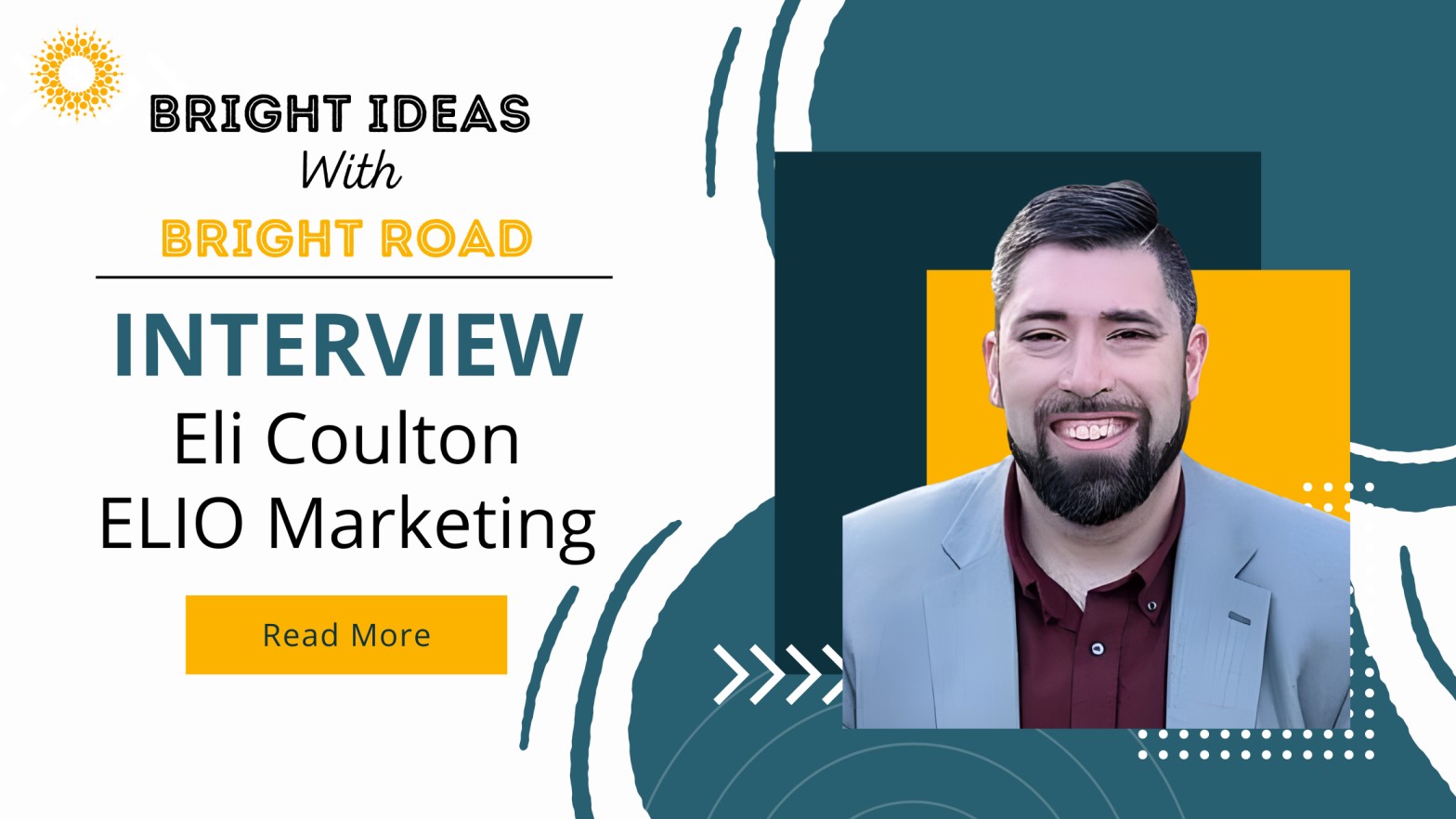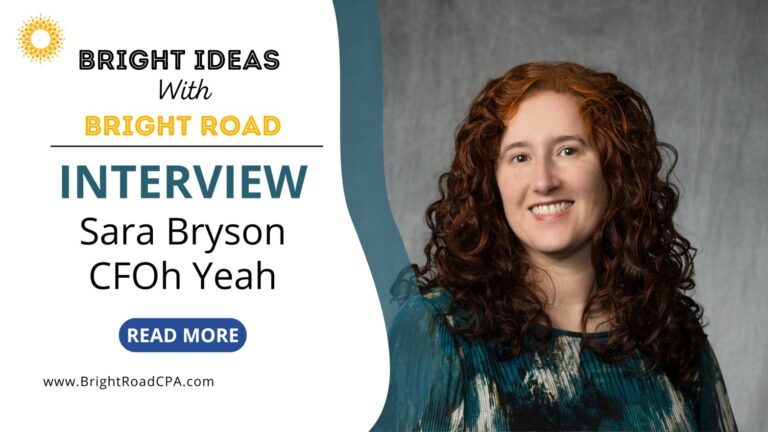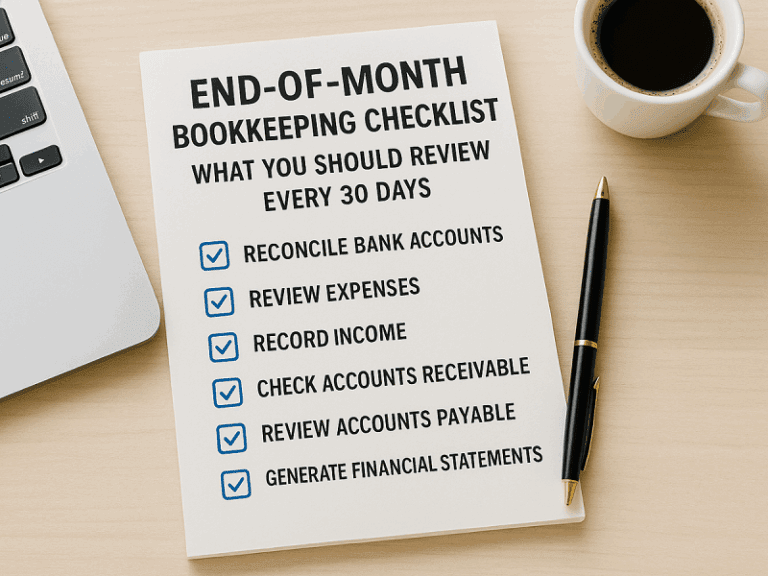From Expense to Investment: Building for Sustainable Growth with Eli Coulton of Elio Marketing
Most owners think about marketing the way they think about utilities or rent: a bill to pay. It’s a line item you tolerate when things are going well and cut when they’re not. But that mindset is exactly what keeps businesses stuck in the peaks and valleys of unpredictable growth.
In our latest Bright Ideas conversation, we sat down with Eli Coulton, founder of Elio Marketing, to talk about reframing marketing from “expense” to “investment,” how to build a system that compounds over time, and why presentation shapes opportunity long before you ever pick up the phone.
Eli’s firm focuses on the digital pillars that matter most—website, search, social, and ads—and stitches them together so they actually work as a system. The goal isn’t noise. It’s momentum.
The Reframe: From Cost Center to Compounding Asset
Owners often approach marketing the way they approach emergencies—reactive, tactical, and urgent. Slow month? Boost some posts. Need leads fast? Throw money at ads. It’s understandable, but it’s also why results vanish as quickly as they arrive.
Eli argues for a different lens: treat marketing like an asset you build, not a cost you endure. Search rankings rise because you keep feeding them. Reputation grows because your brand shows up consistently. Trust accrues because your presentation is reliable everywhere a prospect looks.
Or, as Eli puts it: “Marketing 100% is an investment. 100%.”
That mindset changes the questions you ask. Instead of “What’s the cheapest way to get leads this month?” you start asking “What are we building that will keep paying off twelve months from now?”
The System, Not the Silo
Scattered efforts produce scattered results. Eli sees the same pattern again and again: a sharp logo with a weak website; a decent website with no search presence; a search presence with no social proof; a social feed with no strategy. Each piece in isolation can look fine. Together, they fail to create lift.
Elio Marketing’s approach is to line up the “big four” so they reinforce one another:
- Website: fast, clear, and built to convert.
- SEO: the long game that compounds – content, structure, and credibility signals.
- Ads: targeted spend that fills gaps while organic rises.
- Social: proof of life – consistent, human, and on-brand.
Nothing here is flashy. It’s the discipline of orchestration. When the pieces align, people who find you in search also see a professional brand; those who see your brand can find you in search; and ads show up where your organic footprint isn’t strong yet. That’s how motion becomes momentum.
Professional Presence Isn’t Optional Anymore
There was a time when a printed flyer and a phone number were enough. That time is over. Today, prospects are making snap judgments within seconds on your site, your socials, your Google Business Profile, and whatever else the algorithm surfaces.
You don’t need to be everywhere. But you do need to be somewhere credibly. Eli breaks it down as a maturity path rather than a shopping list:
- Foundation: a legit website + an active Google Business Profile + a basic social presence. Not for “going viral” but instead for professionalism.
- Consistency: keep the lights on. Publish, update, respond, request reviews, and maintain.
- Lift: layer in SEO and targeted ads so you’re visible where intent is highest.
- Scale: expand content, video, and brand storytelling once the core machine hums.
Even at step one, you’re not “doing social” for fun, you’re preventing friction. If a friend sends your name but the prospect can’t find you in a minute or two, you’ve just added doubt to a warm referral. As Eli puts it plainly later in the interview, “Perception is the reality in the business world.”
The Long Game (and Why It Wins)
Owners sometimes expect digital to behave like a light switch: on means leads; off means none. Search doesn’t work that way. It’s more like planting trees; you prep the ground, you plant, you water, and for a while… it looks like nothing is happening. Then everything happens at once.
Eli is candid about the timeline. SEO can take months to show obvious returns. Ads can work more quickly, but you’re renting attention while you build the part you’ll eventually own. The point isn’t to wait passively; it’s to act patiently with a plan that connects the first ninety days to the first nine quarters.
That’s why he pushes clients to think in one-, five-, and ten-year horizons. It’s not overkill. It keeps you from ripping out roots just as they take hold.
Brand Memory Meets Search Intent
One of Eli’s favorite examples is the kind of local brand everyone recognizes by ear: radio jingle, billboard, tagline, the works. That awareness matters. But it only turns into revenue if, in the moment of need, the search results reinforce the memory.
The takeaway isn’t “buy billboards”; it’s that brand and search do their best work together. When someone already trusts your name and also sees you in the top relevant results, the decision is fast. If they don’t see you at all, the brand air cover leaks. If they see you but don’t recognize you, you compete as a commodity. Alignment is advantage.
When to Start (Sooner Than Feels Comfortable)
Owners often ask for the right moment to get serious about marketing—as if “serious” is a milestone that appears on its own. Eli flips that question: seriousness is a choice, not a date. You start where you are, and you level up.
“Now,” he says. “Marketing should be taken seriously right out the gate.”
For brand-new companies, that doesn’t mean a huge spend. It means the basics: a credible site, a Google profile with correct information, and a simple system for gathering reviews. From there, you earn the right to add more, first with consistency, then with investment.
Budgeting Without the Guesswork
There’s no universal price tag for growth because markets, competition, and goals differ. Eli’s ranges illustrate the spectrum: a few hundred dollars a month keeps a basic presence alive; mid-market firms budget a few thousand for labor plus ad spend; large regional players easily push into five-figure monthly budgets when you include media.
What matters isn’t the number itself but what the number funds. If your monthly spend buys consistency across the big four (your website, SEO, Google Ads, and social media), that spend becomes a flywheel instead of a faucet. You stop paying to “turn on the leads” and start paying to multiply the reach of everything you publish.
Doing More With What You Already Have
A lot of teams own tools they barely use—email platforms with no automations, CRMs with no pipeline discipline, ad accounts with old audiences, sites with no conversion tracking. Instead of adding yet another login, a more solid strategy may be to simplify and squeeze value out of what’s already in place first.
That usually means tightening:
- Messaging (what do you actually want people to do?)
- Tracking (can you see which channels are doing the work?)
- Process (who’s responsible for the next step when a lead arrives?)
Even a great website is a billboard in the desert if no one can find it. A “busy” social feed without brand voice is just more noise. Discipline turns assets into levers.
Leadership, Ownership, and the Growth Curve
Sustainable growth isn’t just a marketing problem; it’s a leadership pattern. Every company hits growing pains: capacity, process, talent, cash. The ones that move through those walls treat them as part of the work, not proof that growth “isn’t working.”
Eli’s counsel to stuck owners is practical and unglamorous: step back, own the problem, make the decision, and use the resources around you—coaches, peers, specialists—until you’re on the other side. Nobody does it alone, and you don’t get extra points for struggling in isolation.
That posture matters because marketing will surface operational reality. More demand exposes bottlenecks; better branding invites bigger clients; stronger visibility raises expectations. That’s not a reason to delay, it’s a reason to prepare.
Local Relevance Still Wins
Even in a digital world, proximity matters. Eli works with clients across industries, but he sees the same pattern in local markets: professionalism makes you referable; consistency makes you discoverable; reputation makes you selectable. Ultimately, being polished means you’re trustworthy, not pretentious.
It also means your online footprint should match what people say about you offline. If the grapevine praises your responsiveness but your site hides your phone number, you’ve created friction. If prospects hear you’re the real deal but your last post was from a year ago, you’ve created doubt. Align the story everywhere it lives.
Bringing It Back to the Core Idea
If there’s a through-line in Eli’s approach, it’s this: you can’t harvest what you never planted. Marketing is less about the tactic of the month and more about building an engine that compounds because it is fed reliably over time.
He’s realistic about the early stretch when the spend feels like a burden and the results feel too far away. But the payoff of a system – one you can audit, forecast, and improve – makes the patience worth it.
And underneath the tactics sits the truth owners sometimes forget in the rush to get the word out: Perception is reality in the business world. When your presence matches your promise, growth gets easier; not overnight, but for good.
Want to Connect with Eli?
You can learn more about Eli Coulton and his work at Elio Marketing by visiting eliomarketingllc.com.
You can also follow him on LinkedIn for practical insights, marketing strategy tips, and stories from his work with local businesses. If you’d like to reach out directly, Eli can be contacted via phone (937-203-8288) or email (info@eliomarketingllc.com) as well.
Stay Connected
If Eli’s story inspired you, there’s more where that came from.
Join the Bright Road newsletter to stay connected for monthly interviews, real-world insights, and practical advice you can actually use.
Each week, we share one short email designed to help you stay organized, make smarter financial decisions, and keep your business moving forward.







